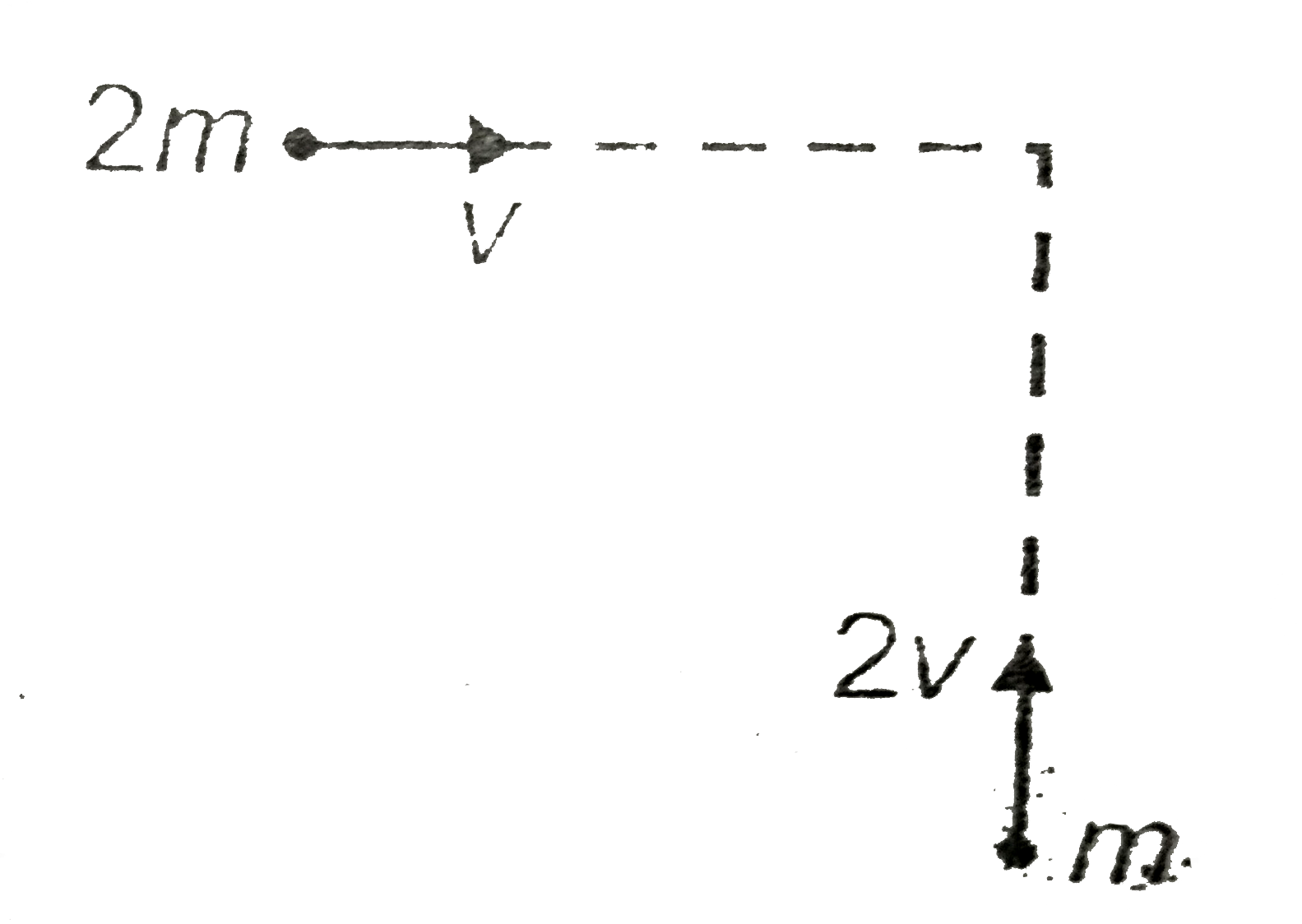Three particles A, B and C of equal masses, moving with the same speed 'v' along the medians of an equilateral triangle, collide at the centroid G of the triangle. After collision, A comes to rest B retraces its path with a speed 'v'. The speed of C after the collision is

It iretraces its path
the direction in which A cam from
does no have
opposite to B
The correct Answer is:D
Step by step video, text & image solution for Three particles A, B and C of equal masses, moving with the same speed 'v' along the medians of an equilateral triangle, collide at the centroid G of the triangle. After collision, A comes to rest B retraces its path with a speed 'v'. The speed of C after the collision is by Physics experts to help you in doubts & scoring excellent marks in Class 12 exams.
Updated on:21/07/2023Topper's Solved these Questions
- KINEMATICSBOOK - FIITJEECHAPTER - KINEMATICSEXERCISE - SECTION (II) : (SUBJECTIVE )
33 Videos
- KINEMATICSBOOK - FIITJEECHAPTER - KINEMATICSEXERCISE - SECTION(II) : MCQ ( SINGLE CORRECT)
47 Videos
- KINEMATICSBOOK - FIITJEECHAPTER - KINEMATICSEXERCISE - NUMERICAL BASED QUESTIONS
3 Videos
- HEAT AND TEMPERATUREBOOK - FIITJEECHAPTER - HEAT AND TEMPERATUREEXERCISE - NUMERICAL BASES QUESTIONS
1 Videos
- LAWS OF MOTIONBOOK - FIITJEECHAPTER - LAWS OF MOTIONEXERCISE - COMPREHENSION-III
2 Videos
Similar Questions
Three particles A, B and C of equal mass move with equal speed V along the medians of an equilateral triangle as shown in hgure. They collide at the centroid G of the triangle. After the collision, A comes to test, B retraces its path with the speed V. What is the velocity of C ?

View SolutionThree particlesA,B and C of equal mass move with equal speed V=5ms−1 along the medians of an equilateral triangle as shown in the figure. They collide at the centroid G of the triangle. After the collision, A comes to rest, B retraces its path with the speed V=5ms−1. What is the speed of C?

View Solution
Knowledge Check
Three particles with equal mass move with equal speed v along the medians of an equilateral triangle as shown. They all collide at the centroid simultaneously. After the collision. A comes to rest, B retraces it's path with same speed. What is speed of C after the collision?
 AvBv/2C2vDinformation ijnsufficient
AvBv/2C2vDinformation ijnsufficientThree particles A, B and C of equal masses, moving with the same speed 'v' along the medians of an equilateral triangle, collide at the centroid G of the triangle. After collision, A comes to rest B retraces its path with a speed 'v'. The speed of C after the collision is
 AIt iretraces its pathBthe direction in which A cam fromCdoes no haveDopposite to B
AIt iretraces its pathBthe direction in which A cam fromCdoes no haveDopposite to BThree particles each of mass m are located at the vertices of an equilateral triangle ABC. They start moving with equal speeds each along the medians of the triangle and collide at its centroid G. If after collision, A comes to rest and B retraces its path along GB, then C (A) also comes
Aalso comes to restBmoves with a speed v along CGCmoves with a speed v along BGDmoves with a speed along AG
Three particles of equal masses are initial at the vertices of equilateral triangle of side 2√3m in horizontal plane. They start moving towards centroid O with equal speed 2m/sec. After collision at O, A stops and C retraces its path with same speed. Distance between B and C just after one second of the collision is αm. Here α is an integer. Find α.

View SolutionTwo particles of mass 2m and m moving with speed v and 2v respectively pependicular to each other collides perfectly inelastically, then

Speed of the particles after collision
View SolutionOn a frictionless surface, a block of mass M moving at speed v collides elastically with another block of same mass M which is initially at rest. After collision the first block moves at an angle θ to its initial direction and has a speed v3. The second block.s speed after the collision is
View SolutionA particle P moving with speed v undergoes a head -on elastic collision with another particle Q of identical mass but at rest. After the collision the collision
View SolutionA particle P moving with speed v undergoes a head -on elastic collision with another particle Q of identical mass but at rest. After the collision the collision
View Solution
